What Is A MoonBoard?
Any conversation about the MoonBoard should begin with the man behind its inception – Ben Moon. Ben Moon is a UK climbing legend and was responsible for pushing the sport to the limits during his heyday; he was the first person to climb a 5.14c/8c+. Ben and his climbing partner, who is also famous in the rock climbing world, Jerry Moffat, popularized training for rock climbing with their classic bouldering film, The Real Thing.
In their day – the late 1980s to early 1990s – doing specific training for climbing was not exactly common practice. Moon, Moffat, and other UK climbers realized that putting in the hours at the gym gave them a considerable advantage when climbing outside. They dedicated a small space in Sheffield to training for climbing and dubbed it The Schoolroom. There wasn’t any literature about climbing training back then so they were left to figure it out for themselves.

Through this process of experimentation, they began building and training on spray walls. These are overhanging bouldering walls that are densely covered with holds, allowing for endless combinations of movements. Eventually, this evolved into the MoonBoard – the first systemized climbing board available on the market.
The MoonBoard is a standardized bouldering wall with a 45-degree overhand and a grid system of holds (mostly crimps). It now comes with LED lights next to every hold and can be connected to an app that has a database of thousands of problems. Users can also create their own problems and contribute to the database.
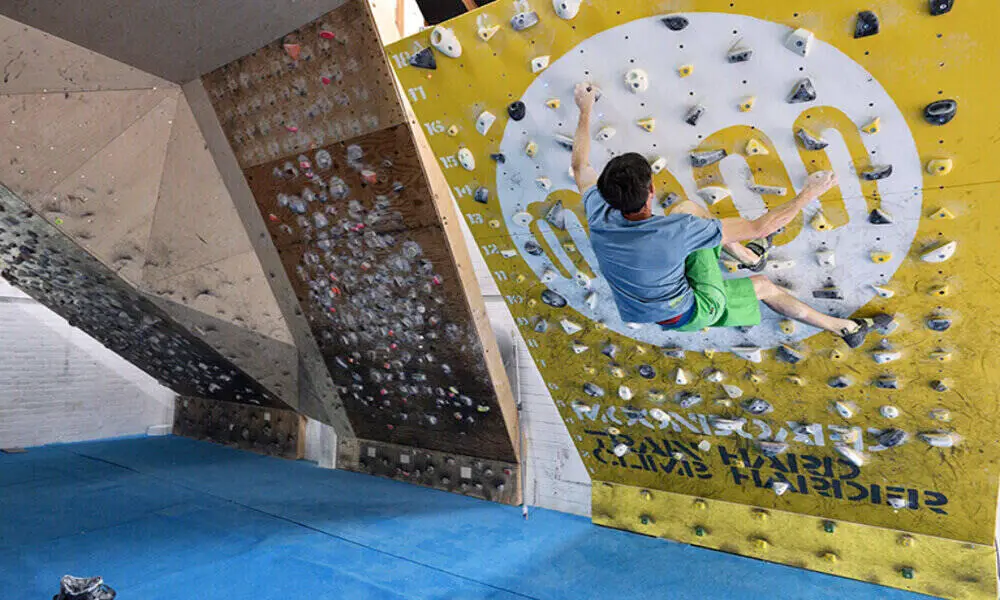
The MoonBoard is known for its awkward crimps and powerful movement. Spend enough time on the MoonBoard and you will be a machine in no time. Although they can be uncomfortable, the holds undoubtedly build iron fingers and super-human contact strength. They do a good job reflecting the type of holds you will often find on rock, meaning gains can easily be taken outside. The app’s thousands of problems give any climber a lifetime of projects at their fingertips.
Check out where the creation of the Moonboard took place!
Moonboard Alternatives
Through the popularization of the MoonBoard, climbers began to see the value of using standardized system walls for training. Because of this, other system walls began to hit the market. The core premise of these walls is synonymous with that of the MoonBoard – universal hold sets allowing for problems of various difficulties, accessible through a streamlined app.
However, despite this core premise, each wall is different and has its own set of advantages. Let’s take a look at some popular Moonboard alternatives.
The Kilter Board
The Kilter Board started popping up in gyms around 2018 and has since taken off and soared in popularity. This is the most popular board right now, with the original layout containing just over 300 holds – quite a step up from the MoonBoard’s 198. The board’s angle is adjustable and can be set anywhere from 0 to 70 degrees. As you adjust the angle, grades from the app’s database will automatically shift. The MoonBoard is typically set up at a fixed angle of 45 degrees.
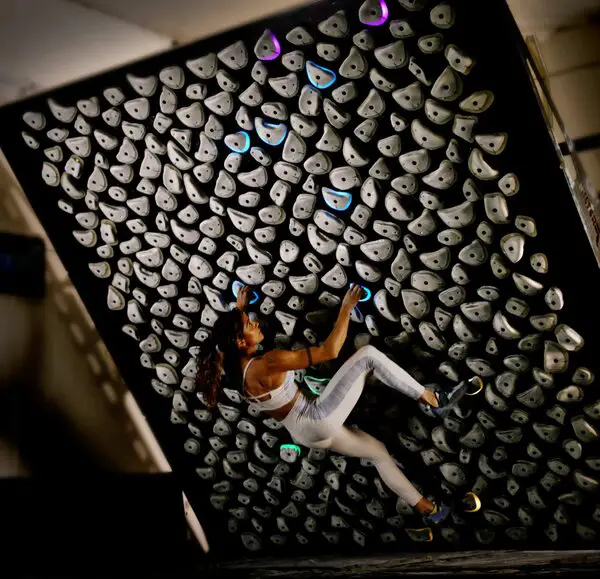
One feature people typically love about the Kilter Board is the “friendliness” of the holds. None of them are tweaky or sharp – instead, they are rounded and ergonomic meaning you shouldn’t lose too much skin in a session. The MoonBoard is known for its aggressive crimps. This is something some people love and some people hate; decide for yourself. In my personal experience, I favor the Kilter Board for power-based sessions and the MoonBoard when focusing on finger and contact strength.
There is also no denying that the Kilter Board is so aesthetically pleasing.
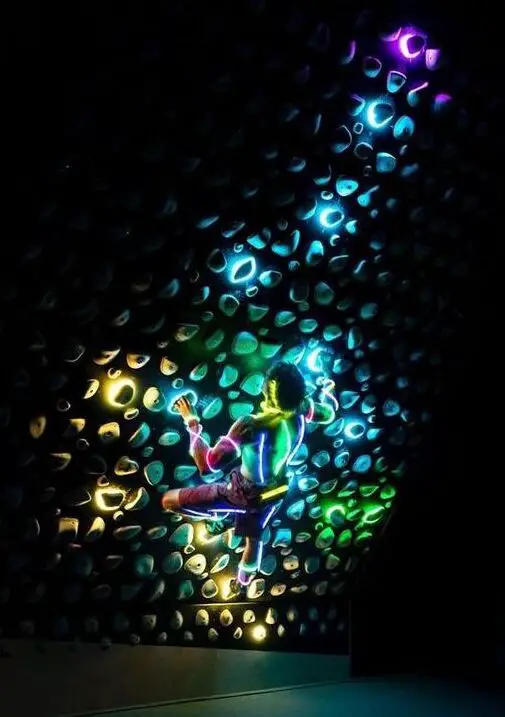
The Tension Board
The Tension Board is also new to the market compared to the MoonBoard and offers some unique features. It is made by Tension Climbing, a company founded by Will Anglin and Ben Spannuth in 2015. The first thing you will notice about the Tension Board is the wooden holds. This is comparable to the plastic holds typically found in gyms and on other boards.
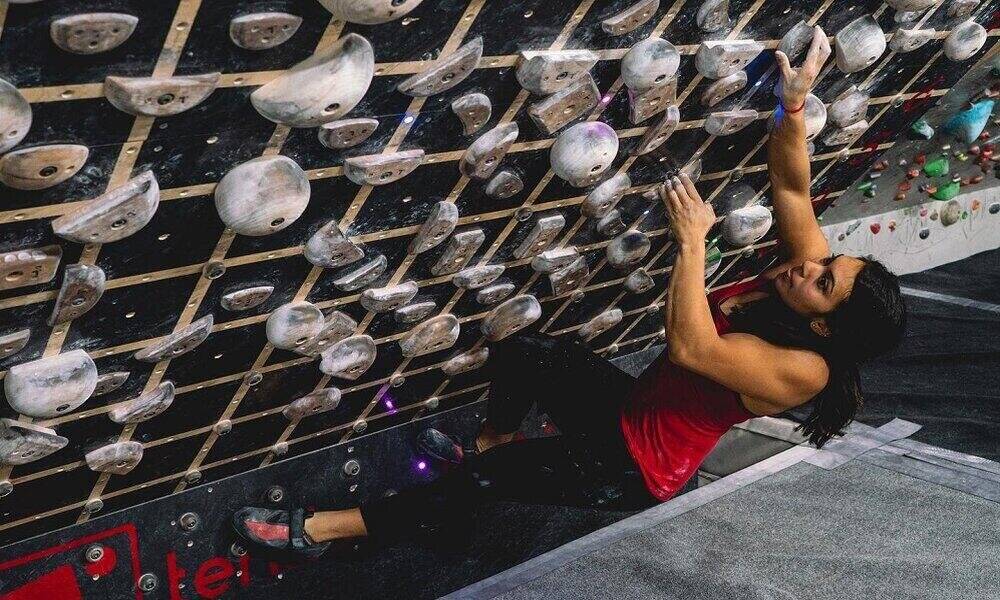
There are two main ideas behind this design choice. First, wood is less abrasive on the skin, meaning you can climb for longer and won’t have to end your sessions early due to your fingertips about to fall off. Second, because the wood holds have less friction, it will force the climber to adapt and use more contact strength, precision, and, you guessed it, tension to stay on the wall.
The other unique feature of the Tension Board is its symmetrical hold set. The wall is mirrored across the vertical axis meaning you will find the same crimp in the same position on the right and left sides of the board. This feature allows the user to climb a boulder in one orientation, flip it in the app, and climb it on the opposite side. This is great for working on muscular imbalances and training weaknesses.
UPDATE: There is a newer version of the Tension Board called the Tension Board 2.
The Grasshopper Board
The Grasshopper Board is one of the newest boards on this list, created in 2021. The company was founded by legendary Utah climber, Boone Speed, and engineer/boulderer, Jeremy Huckins. Boone has spent his whole life putting up hard routes all over the country. He was the first American to climb the grade of 5.14b. He took all this experience and applied it to a versatile climbing board known as the Grasshopper.
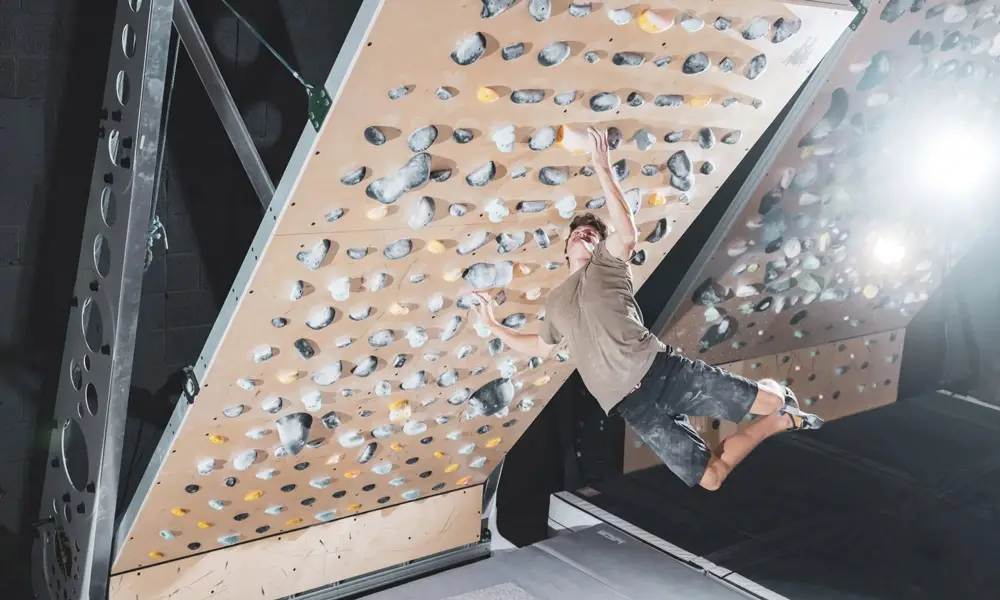
Josh Larson, professional route setter and head coach of the USA climbing team, also played a critical role in the board’s design. This collective knowledge of the team shines through on the board. There are three different hold sets of progressively harder difficulties, allowing for a variety of problems. The holds are plastic with interesting and unique shapes.
Where lots of board climbing seems to consist of pretty simple movement, problems on the Grasshopper Board often engage the mind with interesting drop knees and heel hooks. Like the Tension Board, the Grasshopper is also symmetrical so you can climb problems on both sides. The app also contains an endurance training feature – the lights will change in timed intervals to simulate route climbing. Leave your ego at home, as the problems on this board are sandbagged.
The Woods Board
Brought to you by the one and only Daniel Woods. It reminds me a lot of the MoonBoard but bigger. If you love a good jug, then this isn’t the board for you. In classic Woods style, the board is full of wooden pinches and crimps.

The Woods Board has a combination of plastic and wooden holds which benefits different climbing techniques and really makes the climber push through each movement without relying on friction.
For a while, Woods was yet to announce the launch of his new training board. For all those waiting in anticipation, he finally announced that the boards are now available to order. If you want to get your hands on one, check out the info here.
The Lattice Board
Is there anything Tom Randall doesn’t do? Clearly not. Added to his long list of ventures is the Lattice Board which is literally a board that looks like lattice…

It’s not used like any conventional training board where you connect it to an app and choose the climb you want to do. The Lattice Board is used as a climbing assessment tool. You perform certain drills which will help you determine what weaknesses you need to work on.
Take a look at how you would use the Lattice Board.
Which Board is Best?
So now that we’ve taken a look at five Moonboard alternatives, you may be left wondering which one is best. There is really no concrete answer to this question. Every board has a different set of advantages and disadvantages, and at the end of the day, it comes down to personal preference. I have dabbled on most of these boards but ended up spending most of my time on the MoonBoard and Kilter Board. Others are diehards for the Tension or Grasshopper.
There are also some new boards on the market, including the Decoy Board. The newer boards are getting bigger and better with densely packed hold sets with lots of variety and adjustable angles.
At the end of the day whichever board you use, whether it be a brand new Kilter Board or a homemade spray wall, what you put into it is what you’ll get out of it. All of these boards can be utilized for huge gains in strength, power, endurance, and even technique. Pick what catches your eye and get training!



